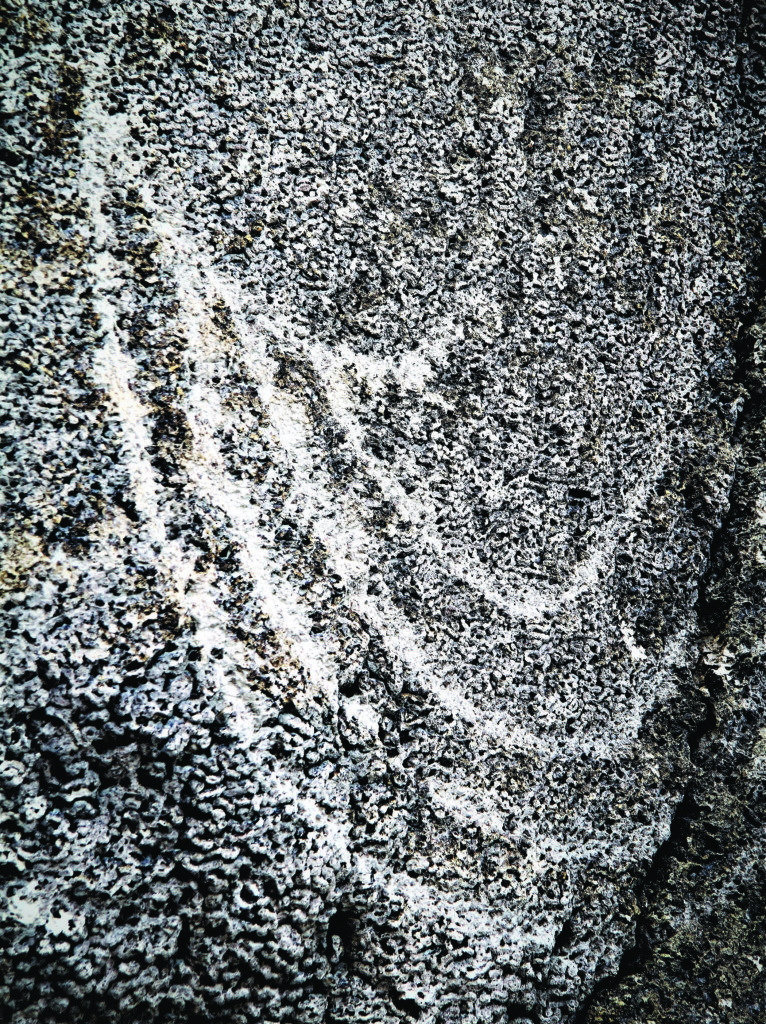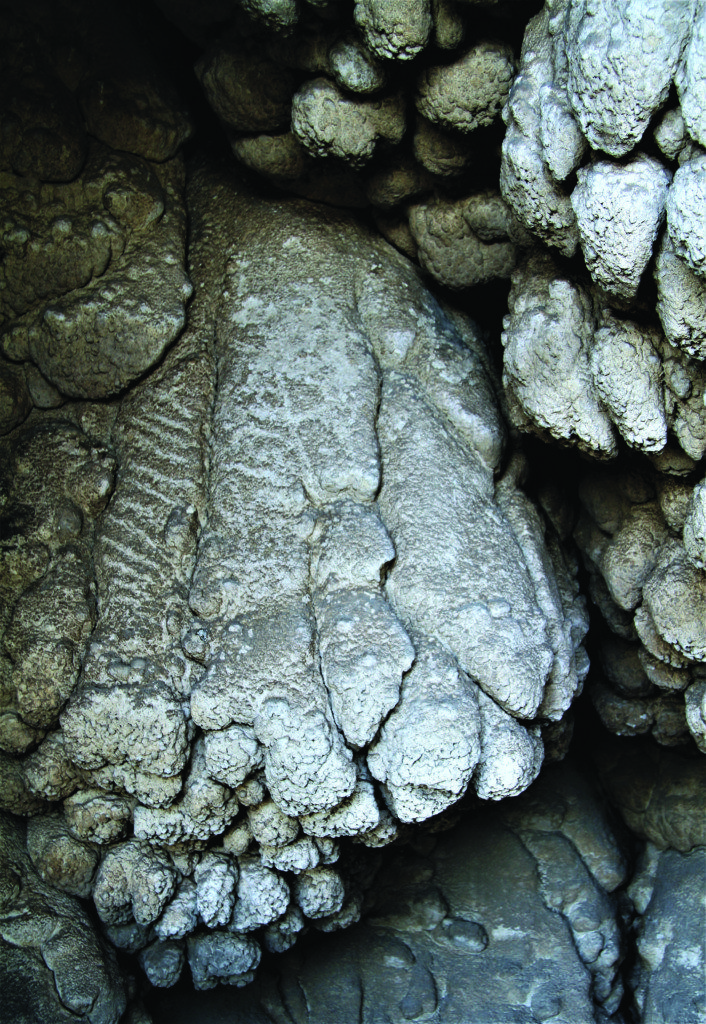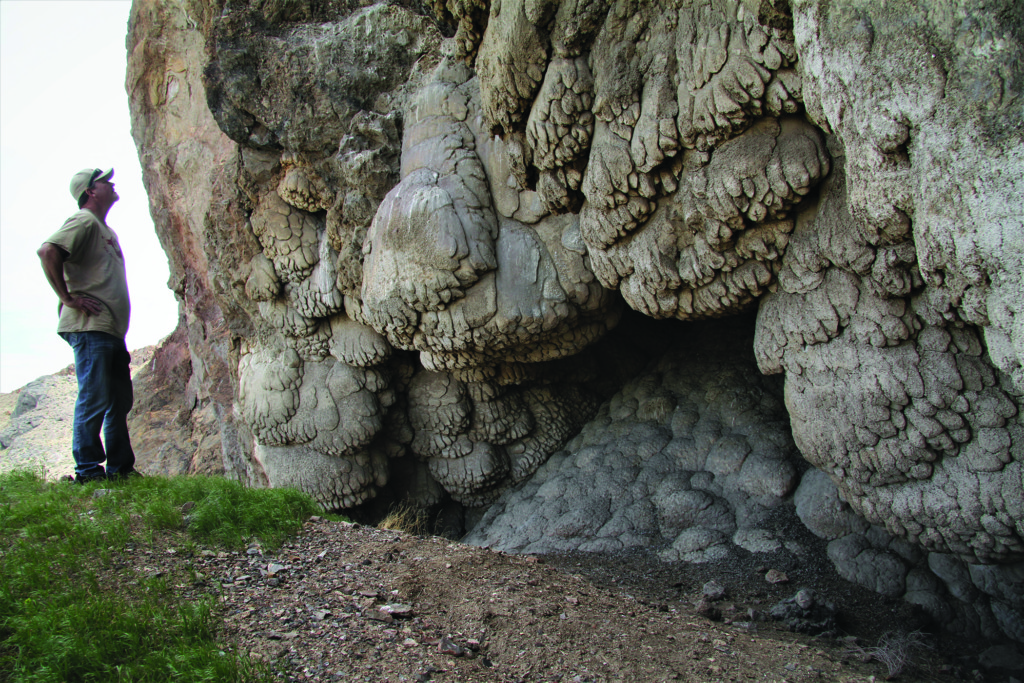By Debra Reid, d.reid@winnemuccapublishing.net; in the Lovelock Review-Miner, Nevada 5/30/18; published with permission
This summer, a University of Nevada, Reno archaeological team will “re-visit” the Leonard Rockshelter near Lovelock. Updated excavation and radiocarbon dating methods may confirm the site was occupied even earlier in time by some of the first residents of North America.
The project will test a previous claim the site contains evidence of the “Clovis” people who scientists believe were the ancestors of modern Native American tribes and lived around 13,000 years ago. If the claim is true, it would increase Leonard Rockshelter’s scientific significance.
Past research indicated prehistoric human occupation ranged from about 8700 to 700 years before present but that could change with the UNR Leonard Rockshelter excavation project.
Dr. Geoffrey Smith described his project in a proposal for The Archaeological Conservancy (TAC), owner of the site south of Lovelock. Smith is an Associate Professor and Executive Director of the UNR Department of Anthropology’s Great Basin Paleoindian Research Unit.
“It (the proposal) lays out the reason why we are returning- to evaluate an old claim that the site contains a Clovis-aged occupation,” he said last week. “If that is correct, it would be a really big deal. However, with the only information collected by the site’s original excavators, we have no way of knowing.”
PRIVATE PRESERVE
To protect the site for such research, TAC bought 640-acres of private land in 2002 from the Santa Fe Pacific Gold Corporation, said Cory Wilkins, Western Regional Director for TAC. Those interested in Leonard Rockshelter must contact the group and request a tour of the site.
Leonard Rockshelter is part of a series of caves and shelters in the Humboldt Range. Shelters and caves were eroded by the wave action of Lake Lahontan. Scientists say the giant lake reached its final highest level around 15,300 years ago then gradually receded leaving behind the evidence of prehistoric human occupation.
After guano miners found artifacts in 1936, Leonard Rockshelter was excavated in 1937 and 1950 by archaeologist Robert Heizer of the University of California, Berkeley. He unearthed a “modest assemblage” of stone, fiber and wooden artifacts including wooden atlatl foreshafts, obsidian flakes and projectile points.Obsidian flakes were recovered by Heizer from below a layer of bat guano radiocarbon dated to around 13,000 years ago, Smith said.
If the age of obsidian flakes and other artifacts found below the 13,000 year old material is confirmed, that could indicate the rockshelter was inhabited prior to that time during the terminal Pleistocene Epoch. The Pleistocene Epoch, otherwise known as the Ice Age, lasted from about 2.6 million years ago to 11,000 years ago and was followed by the current Holocene Epoch.
“If clear evidence of human occupation (e.g., obsidian flakes) does exist in a primary context below deposits dating to 13,000 years ago, then the site could join the growing list of Clovis-aged (and perhaps, pre-Clovis) occupations in North America,” Smith said.
BETTER SCIENCE
Leonard Rockshelter artifacts were some of the first to be radiocarbon dated, a new research method at the time. Wooden foreshafts that served as part of a weapon system tipped with chert or obsidian projectile points were directly dated to around 7900 years ago placing them near the beginning of the middle Holocene Epoch. Smith said radiocarbon dating has improved so new dates on sediment and artifacts should be more accurate than Heizer’s earlier estimates.
In his research proposal, Smith details the nature of the evidence he is looking for:
“The primary goal of our proposed work is to test the hypothesis that Leonard Rockshelter contains evidence of human occupation dating to the terminal Pleistocene. Evidence needed to support this hypothesis includes artifacts or features of unquestionable human origin situated at the same depth or below organic material (guano, charcoal, wood, etc.) radiocarbon dated to the terminal Pleistocene.”
Smith said his team will excavate smaller increments of sediment in some of the four trenches dug earlier by Heizer’s team. A large block of roof fall, from the cliff above the rockshelter, may be broken up and removed so the ground below can be excavated, Smith says in his proposal.

There are petroglyphs on layers of tufa “pillows” covering parts of
the cliff above and fallen boulders below conceal dark chambers
that could still hold undiscovered clues about the shelter’s former inhabitants. Credit: 5-30 REVISED Leonard Rockshelter
DEBRA REID • Lovelock Review-Miner
GUARDIANS NEEDED
Meanwhile, Wilkins would like to recruit local volunteers, known as site stewards, to help him keep an eye on the place. Site stewards visit TAC preserves and report any threats to the sites Vandalism and theft can destroy unique evidence of ancient human history. The group’s objective is to preserve the Leonard Rockshelter and other sites for further research. “The site is fragile and susceptible to looting,” Wilkins said. There can be big penalties for looting or damaging archaeological sites but they vary from state to state, he said. Wilkins said he’s looking for more sites in need of protection. TAC buys archaeological sites on private property that would otherwise be paved over and destroyed by modern development. “Right now, my push is Great Basin archaeology,” he said. “We’re looking at anything out here but, the challenge in Nevada is there’s so much public land. The BLM, Forest Service and other public agencies own 82 percent of Nevada so that limits private property that’s for sale that has archaeology on it. Lovelock Cave is BLM property so BLM archaeologists manage that site.”
Wilkins said he’ll give tours of Leonard Rockshelter upon request. There are petroglyphs on layers of tufa “pillows” covering parts of the cliff above and fallen boulders below conceal dark chambers that could still hold undiscovered clues about the shelter’s former inhabitants. Smith said petroglyphs are difficult to age but researchers believe the Leonard Rockshelter motifs were carved sometime in the last 4,000 years due to their elevation. In earlier times, the shelter floor was lower and carved areas would have been more difficult for the artists to reach. The view from Leonard Rockshelter includes other rock outcroppings and what from a distance look like more rockshelters. Wilkins said he’s got more exploring to do in Pershing County.
Those interested in serving as site stewards or a tour of the Leonard Rockshelter are asked to get in touch with Wilkins. His email is tac-west@comcast.net
5/30/18 in the Lovelock Review-Miner, published by permission

More petroglyphs cover the cave. Credit: 5-30 REVISED Leonard Rockshelter
DEBRA REID • Lovelock Review-Miner




